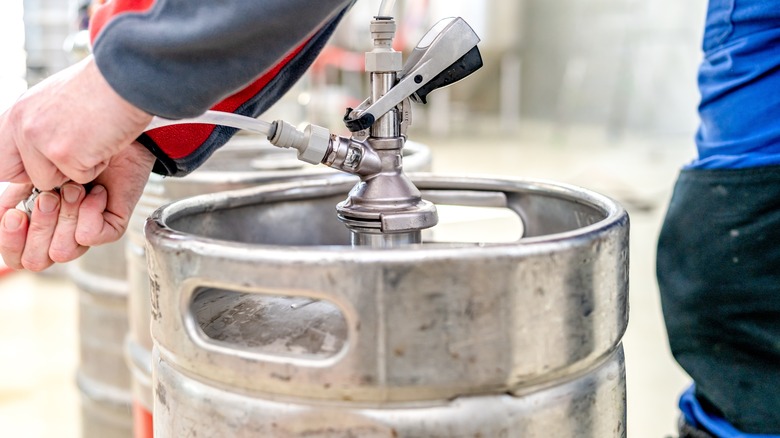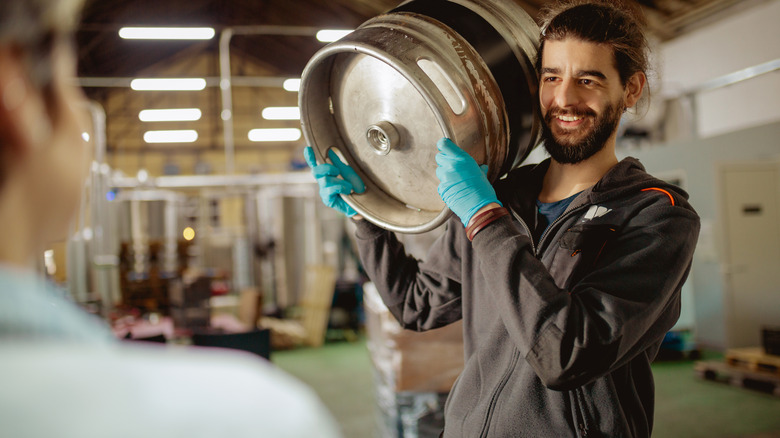How Many Cans Of Beer Are In A Half Or Full Keg
Have you ever taken a look at a keg purchased for a particularly spirited shindig and wondered how much beer you're actually getting? Is it too much or not enough? Would it have been smarter to just buy cans of beer in cases? While issues of value and proper quantity are subjective and depend on just how you like a party to go down, thankfully much of the info that quandaries such as these involve is standardized and straightforward.
A standard keg, often referred to as a half barrel, contains 15.5 gallons of beer. Therefore, a full keg holds a whopping 1,984 ounces of liquid gold. Now, since a serving of beer is typically 12 ounces, a full keg would accommodate approximately 165 cans. But what about those who prefer the trendy 16-ounce tall boys? Fear not, tall boy enthusiasts, for a full keg can still quench your thirst as it equals around 124 tall boys. Either way, it's a staggering amount that can turn any gathering into a memorable event.
For those hosting a more intimate kegger, the pony keg, also known as a quarter barrel, is a popular choice. Containing 7.75 gallons of beer or 992 ounces, what we would refer to as a half keg accommodates approximately 82 12-ounce cans. It's a perfect compromise for those who want a good amount of beer without committing to the enormity of a full keg.
Kegs come in all sizes
Now that we understand how many 12-ounce cans fit into a keg, let's delve into the fascinating world of kegs themselves. The term has its roots in the Middle English word "kag," meaning a small cask or barrel. The evolution of the keg has been a journey through time, adapting to the needs and preferences of beer enthusiasts.
The standardization of keg sizes is a relatively recent development. In the mid-20th century, the brewing industry saw the need for a uniform system to facilitate production, distribution, and consumption. The half barrel, or full keg, became the benchmark at 15.5 gallons and dominated the market. This standardization not only streamlined processes for breweries but also made it easier for bar owners to understand the quantity of beer they were purchasing.
Beyond the familiar half and quarter barrels, a range of keg sizes caters to diverse preferences. A sixth barrel offers a moderate option, fitting comfortably in home kegerators. Cornelius (or corny) kegs, originally designed for soda, have gained popularity among home brewers. These smaller vessels allow for experimentation and ease of handling.
Whether you're opting for a full keg or a half, that quantity of beer can be a commitment, but rest assured that if you go the keg route, they are designed to keep the beer inside fresh for quite some time. Just make sure you invite over some good friends to help you polish it off.

